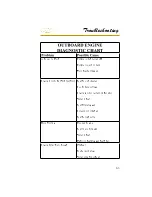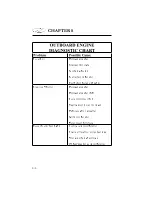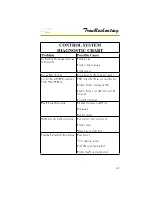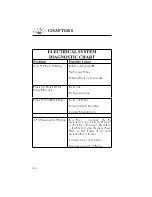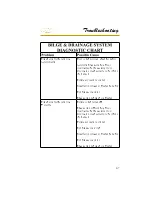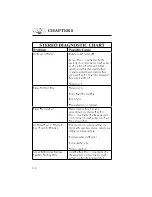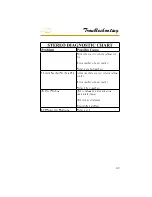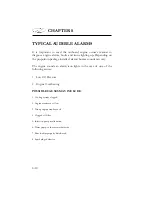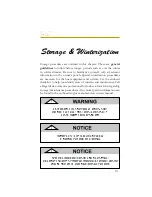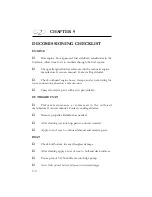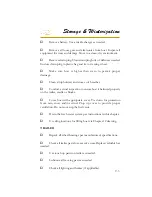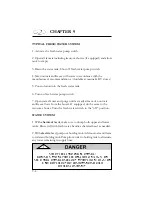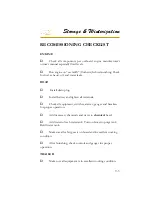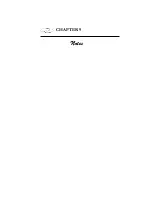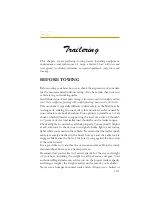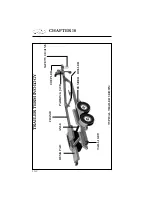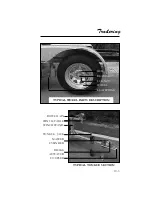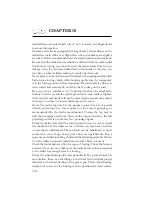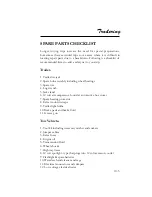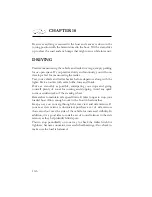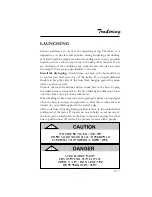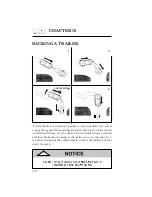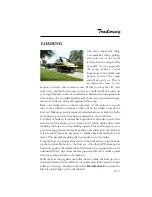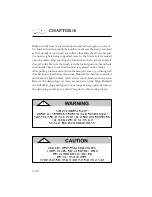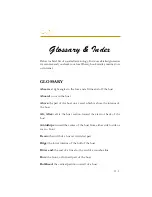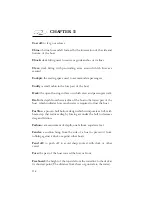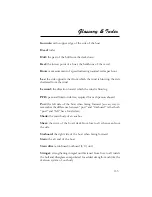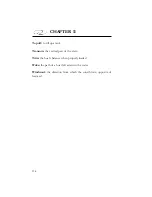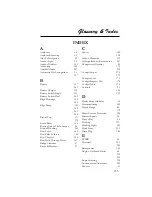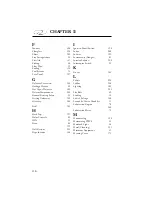
10-1
This chapter covers trailering/towing basics including equipment,
maintenance, and techniques of using a trailer.
Check with state and
local agencies for detailed information on required equipment, safety issues, and
licensing.
BEFORE TOWING
Before towing your boat, be sure to check the air pressure of your tires
for the recommended infl ation rating. Also, be certain that your tow
vehicle is in good working order.
Install bimini top in its boot before towing. Also, remove and store cockpit and bow
cover. Store cockpit carpet along with cockpit/mooring/bow covers in ski locker.
This can make it especially diffi cult to drive safely, as the hitch may be
in danger of striking the road. Also, this situation can be caused by
worn vehicle rear shock absorbers. One option is to install a set of air
shocks which will assist in supporting the load. As a rule of thumb 5
to 7 percent of the total trailer load should be on the trailer tongue.
Check all lights to ensure they all work properly. You may fi nd it helpful
at ask someone to check your turn signals, brake lights, and towing
lights while you remain in the vehicle. Be certain that the trailer winch
cable is securely attached to the boat’s bow eye and the cable lock is
engaged. Make sure the bow of the boat is snug against the bow stop
at the winch stand.
It is a good idea to tie another line or secure an extra cable to the winch
stand and boat bow eye as a backup system.
Be certain that your trailer is of rated capacity for the size and weight
of your boat, including the weight for all fuel, water and gear. Your
authorized Regal dealer can advise you on the proper trailer capacity
and tongue weight ( the weight exerted on the rear of your vehicle).
Never use a bumper mounted trailer hitch. Always use a bolted or
Trailering
Summary of Contents for 29 OBX
Page 1: ...OWNER S MANUAL OWNER S MANUAL 29 OBX 29 OBX REGAL 281760 REGAL 281760 3 2016...
Page 2: ...THIS PAGE IS LEFT INTENTIONALLY BLANK...
Page 7: ...INT 7 Introduction THIS PAGE IS LEFT INTENTIONALLY BLANK...
Page 18: ...INT 18...
Page 38: ...u v u w CHAPTER 1 NAVIGATION LIGHT RULES...
Page 41: ...Safety On Board...
Page 94: ...Engine Controls 3 27 Typical Switch Shown Above...
Page 96: ...Engine Controls 3 29...
Page 162: ...Equipment Operation X Y Z Typical Dual Battery Switch Circuitry Front View...
Page 163: ...CHAPTER 6 _ Dual Battery Switch Circuitry Rear View...
Page 171: ...CHAPTER 6 CANVAS TRAVEL COVER...
Page 182: ...Equipment Operation Depth Gauge With Functions...
Page 196: ...Equipment Operation...
Page 257: ...Cosmetic Care Maintenance 7 35 Notes...
Page 262: ...Troubleshooting 8 5...
Page 263: ...CHAPTER 8 8 6...
Page 264: ...Troubleshooting 8 7...
Page 265: ...CHAPTER 8 8 8 0 1 0 2 3 4 5 6 2 4 6 7 8 9 2 3...
Page 273: ...CHAPTER 9 Notes...
Page 294: ...Technical Information 12 3 TYPICAL LABELS LOCATIONS Power Tower...
Page 299: ...Technical Information...
Page 305: ...Technical Information Note Locate per Splash...
Page 306: ...Technical Information...
Page 310: ...Technical Information TYPICAL HULL HARNESS BREAKOUT...
Page 311: ...Technical Information TYPICAL SWITCH PANEL BREAKOUT...
Page 312: ...Technical Information TYPICAL DASH CHARTPLOTTER BREAKOUT...
Page 313: ...Technical Information TYPICAL GARMIN YAMAHA NEMA 2000 NETWORK...
Page 324: ...Technical Information...

